Submitted by WA Contents
"We talk about a lot of sustainability and this is another problem," says Mario Cucinella
Denmark Architecture News - Jul 27, 2023 - 10:12 2514 views
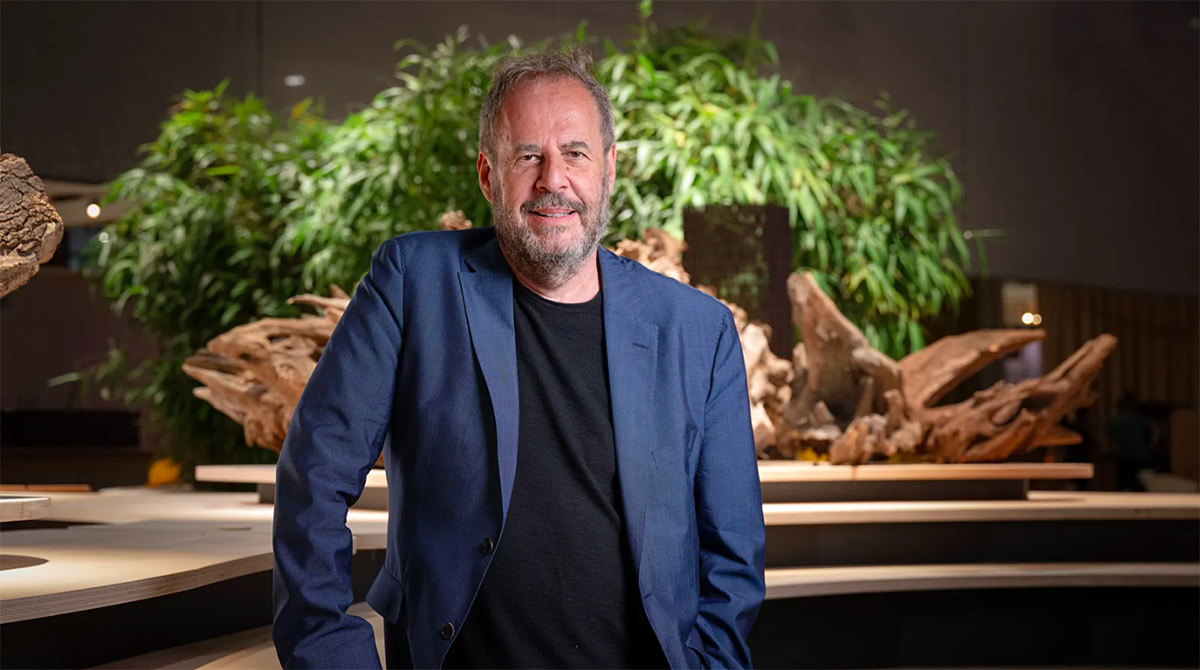
Instead of reiterating the sustainability problem, we should educate the next generation of architects on how to deal with the sustainability problem and develop new tools, according to Mario Cucinella, founder of Mario Cucinella Architects.
Cucinella, who spoke at a panel discussion at the UIA World Congress of Architects held from July 2-6 in Copenhagen, Denmark, emphasized the perception of sustainability should now change and added that "we talk about a lot of sustainability and this is another problem."
Talking about the principles of his school, SOS School of Sustainability, a post graduate academy he founded in Milan in 2015, he explained how the young architects are educated on sustainability with new tools, processes and methods.
Cucinella also underlined how the school is bringing emerging professionals with real projects together in the industry to face with the challenges of the market.
SOS School of Sustainability offers a Master's Program in Sustainable Architecture and Design, focusing on three pillars; education, research and practice.
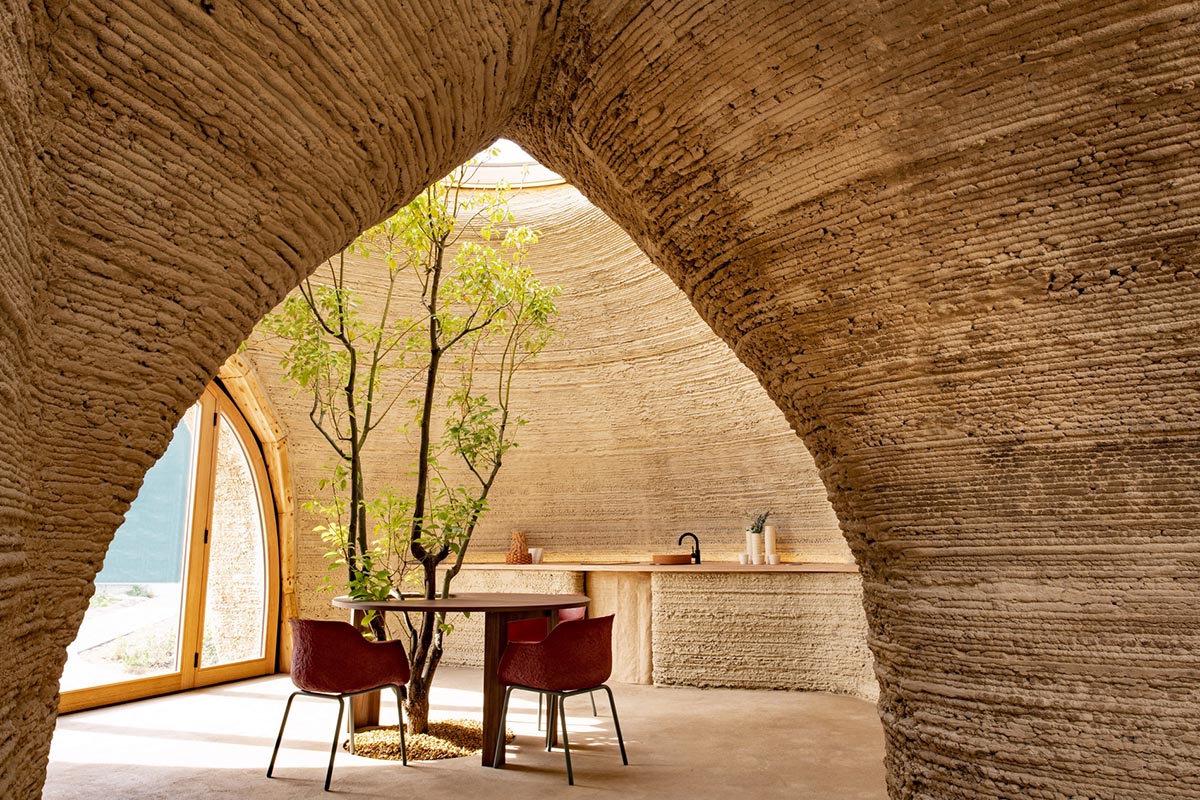
Mario Cucinella Architects and WASP built a 3D printed housing prototype, called TECLA, was printed in Massa Lombarda, Italy. Image © Iago Corazza
The panel talk, titled Dynamic Capabilities – why we need to change how, who and what we teach, highlighted steps and visions on how to shape the sustainable societies of tomorrow and develop a bottom-up approach on a fundamental level.
The panel was composed of multi-disciplinary speakers, including Mikkel Thomassen - PHD, Postdoc at the Royal Danish Academy and CEO of Smith Innovation, Saija Hollmén - Architect & Professor, Aalto School of Arts, Design and Architecture, Tokunbu Omisore - Vice President, UIA Region 5, Mario Cucinella - Architect & Founder, Mario Cucinella Architects, Sharon Haar - ACSA President, Professor, University of Michigan, Lene Dammand Lund - Rector, The Royal Danish Academy, Lotte Marianne Bjerregaard Jensen - Professor MSO Sustainable Architecture, Aarhus School of Architecture and So Young Kim - Professor of Practice at Hanyang University ERICA, Department of Architecture.
"Changes cannot take place unless all links in the value chain take part"
"Current practice in construction industry is not sustainable, we all know that," said Lene Dammand Lund, Rector, The Royal Danish Academy in her presentation.
"Changes cannot take place unless all links in the value chain take part."
"The challenges are of a systemic nature. This means that students of architecture must be trained cross-disciplinary cooperators in cross-disciplinary cooperation, and that they must have a holistic approach."
"So the best we can do for the environment and climate is to use whatever we have," she added.
"We need a new essential form of consumer materialism that seeks to resolve the issues highlighted by the sustainable development goals. Architectural disciplines are unique when it comes to embracing every societal domain, production, technology, science, our common narratives, ethics, and the shaping of our culture."
"Whereas as you know, we frequently only discuss the supply side. Social, cultural and behavioral changes can accelerate the adaption they write because motivation is generally quite low in and inadequate if it's not followed up by structural and cultural changes," Lund added.
At the beginning of the session, Mikkel Thomassen, PHD, Postdoc at the Royal Danish Academy and CEO of Smith Innovation, quoted American economist David J. Teece as saying: "when you need to innovate on a very fundamental level, it's not about following the rules, it's about forming the rules."
Referring to Teece's remark, Mikkel Thomassen continued that "but in contrast to that, we also have the dynamic capabilities when we will form new structures, make systemic changes when we will not follow the rules, but perform the rules."

Mario Cucinella Architects built a "climatically-sensitive" university building in Rome. Image © Moreno Maggi
According to Mario Cucinella, sustainability is also about what we understand by innovation. As he underlined, innovation does not only describe a product or a tangible object.
"I think there arise some questions about what innovations means, what we do, what it means is only something that's in front of us, but it is also something that's behind us," said Mario Cucinella.
"We are creating an office, which means that I'm not an academic; I'm a professional. So we find it many times talking to many students and young architects how we can face the agenda of 2030 and 2050."
"So that's is the main question because more and more say the European level regulations and ideas of what will be, I'd say the sustainable design, sustainable city," Cucinella continued.
"We talk about a lot of sustainability and this is another problem"
"We talk about a lot of sustainability and this is another problem," said the architect. "So, how we are creating tools and how we can teach it in a generation."
"But the point is that it's not only about design, it's not only designed with the next generation, we design with next generation."
"The point is that we can transfer some knowledge and test the rule of the office. So, after many years of work, at the SOS, we are creating a postgraduate program with approximately 15 students and come in our office working in one year and they are being part of the work, they take lessons - we explain tools and teach them how we can approach sustainable design."
"And the next stage is to teach design, we make a project with them, with a real client and then this makes them creating a sort of a curriculum," he added.
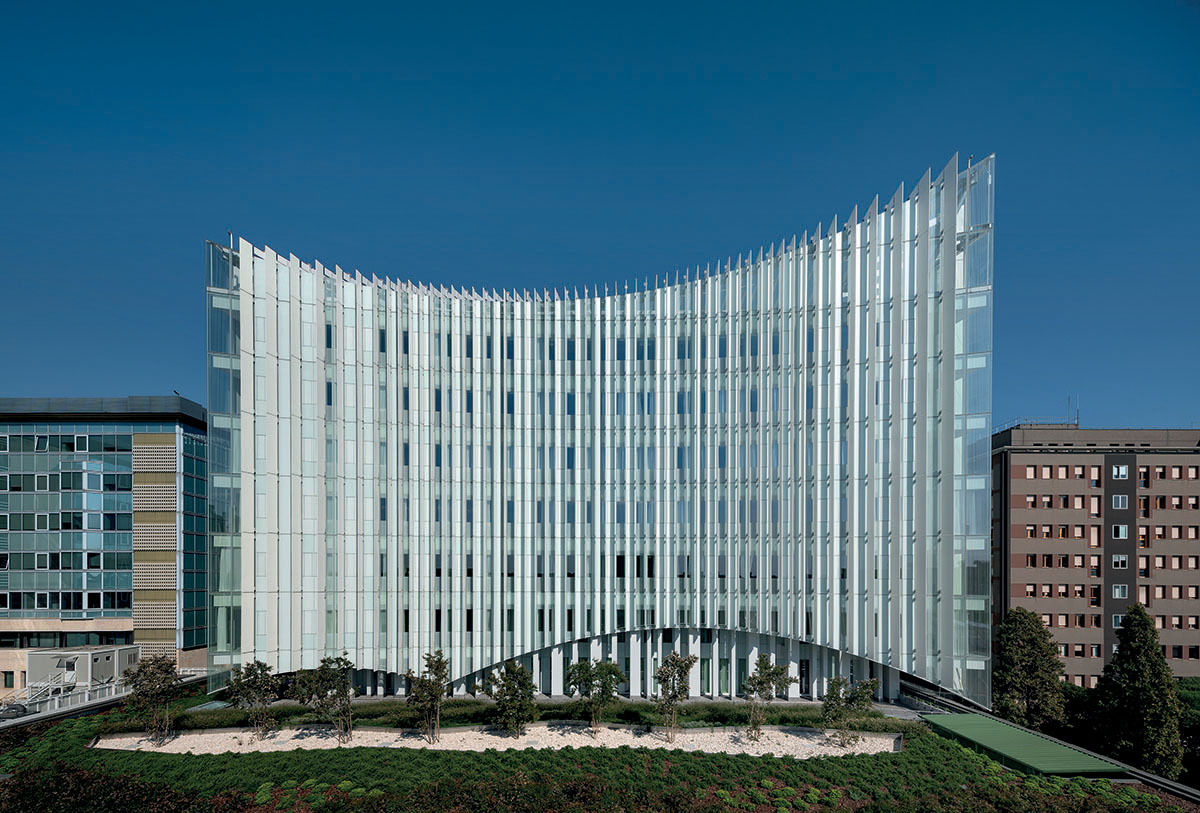
Mario Cucinella Architects completed a hospital wrapped by ceramic louvres, resembling an "iceberg" due to its "cool appearance" in Milan. Image © Duccio Malagamba
"Sustainability is not only about the kilowatt"
The architect believes that the concept of sustainability is not just about measurement and value, or "the kilowatt" in simple terms.
"Sustainability is not only about the kilowatt because it would make a big mistake," said Cucinella.
"It's not about only the performance of the building, it's about how this building is working with people, how the influence of building could be in the society."
"It is a much more wide vision of what is the rule of architects."
"So what we are doing mainly at the school is creating four courses; one course is about architecture as a social business. We're working with the community and working with an international association to design building in a different context."
In his talk, Cucinella also talked about his new project in India and emphasized how 600 million farmers in India create environmental pollution caused by using dry ice and gasoline generator to bring food to the market.
"In India there are 600 million farmers, that's the scale and almost the farmers are families," Cucinella explained.
"They have only two active land to work, and they need to bring their food in the market. They are using ice and how you make ice; you make speed with the generator using gasoline and then create an amazing pollution."
"It’s important how we can design something for a community to make that possible and to transform their food in an opportunity," he added.
"So the school is investigating problems and try to find some solutions and also make something," the architect continued.
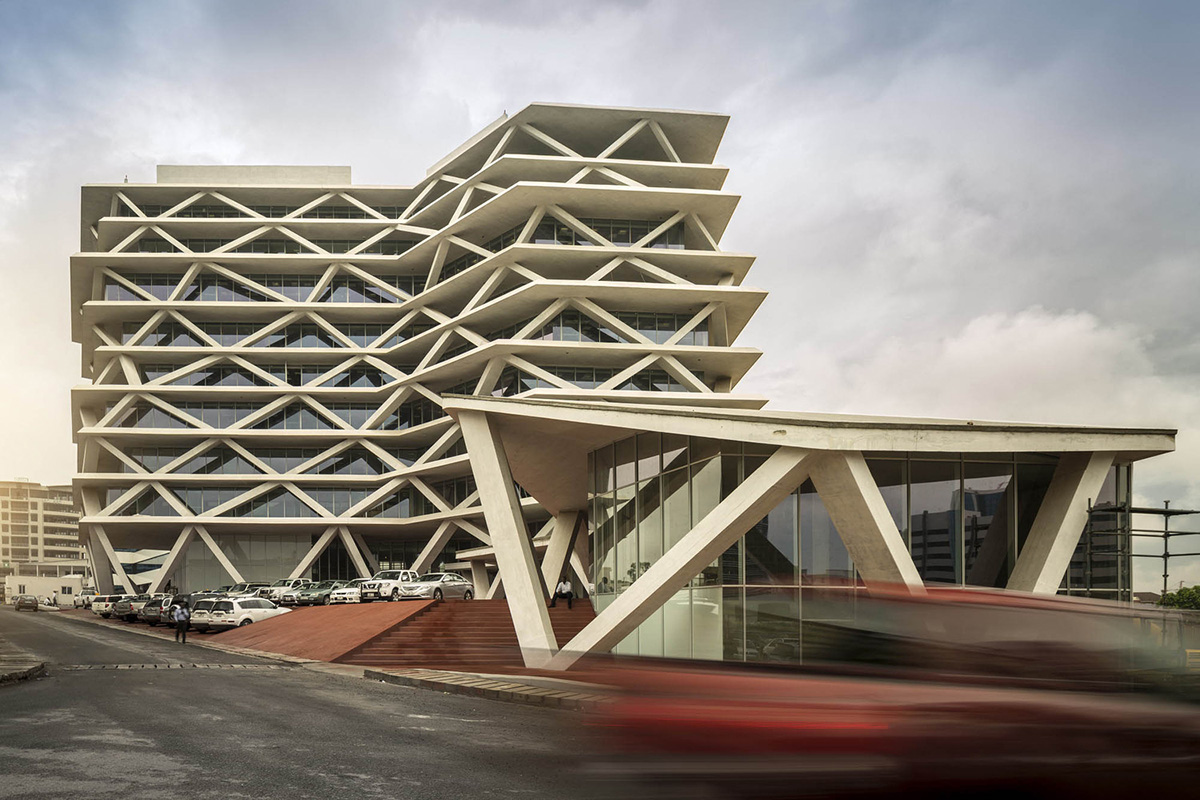
Mario Cucinella Architects in collaboration with Deweger Gruter Brown & Partners built One Airport Square in Accra, Ghana. Image © Fernando Guerra | FG+SG, courtesy of Mario Cucinella Architects
"We did a very interesting work about recycling material, which is a major argument - now in building construction," Cucinella explained.
"It is one data that is very important to know in the life of a building of 30 years, half of the C02 emissions are the material and half of it is the operation of the building."
"So if you're not working on material and working in research with students about how we can design the next generation building with different material, we cannot reach the goal."
"That is an experience we did with utilities in Bologna on how to show to the people in a piazza, the people are bringing plastic and explaining what kind of plastic, what they can do it and use, and do some object by broken object, do another object," he added.
"Students or young architects have a completely different vision about the future"
"What is the interesting for us is the social responsibility of an office. You know, we are collecting a lot of information. We are working on so many projects."
"It's very important for us that we can give it back this kind of knowledge. But also, students or young architects, who are at the ages of 23 or 25, have a completely different vision about the future different from us; because they have a different perspective, they have different ambitions," the architect emphasized.
"I think there's combination of young generation with the people have more experience combining together is the rule of a school. I think that moment is important in which we are exchanging knowledge and vision - and that's I think is the aim of the school," he added.
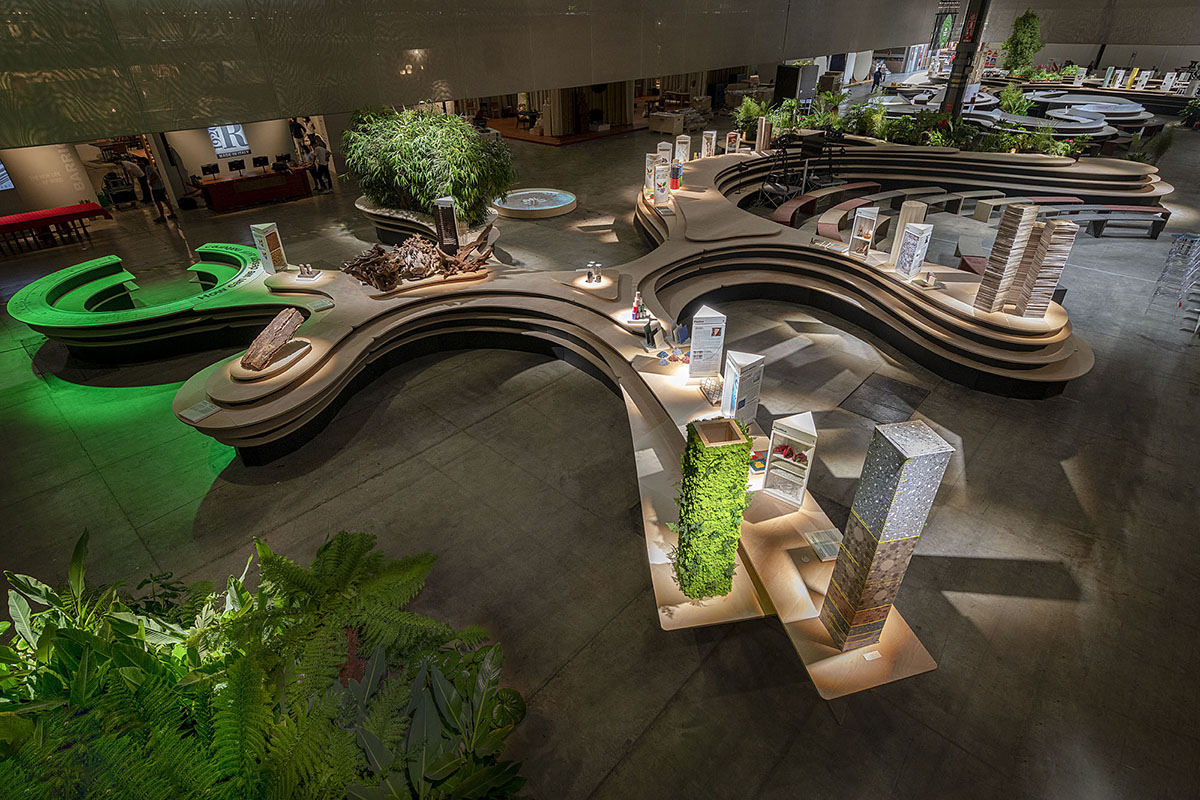
Mario Cucinella Architects installed a large landscape block to discuss the vital aspects of circular economy and reuse at Milano Design Week 2022. Image © Giovanni De Sandre
"We can't solve the problem in one year"
Cucinella also added that "the important step is the design of a building with students about how we can design building to reach the goal of 2050. And, the 80% reduction of CO2 is a very ambition program of the EU."
"So I think it is also the point, which I think is a very important for an architect, working with students is very important. We can't solve the problem in one year; we need time for everything, not because we have to face climate change in 2030-2050."
"The most difficult thing is to change the culture," Cucinella explained.
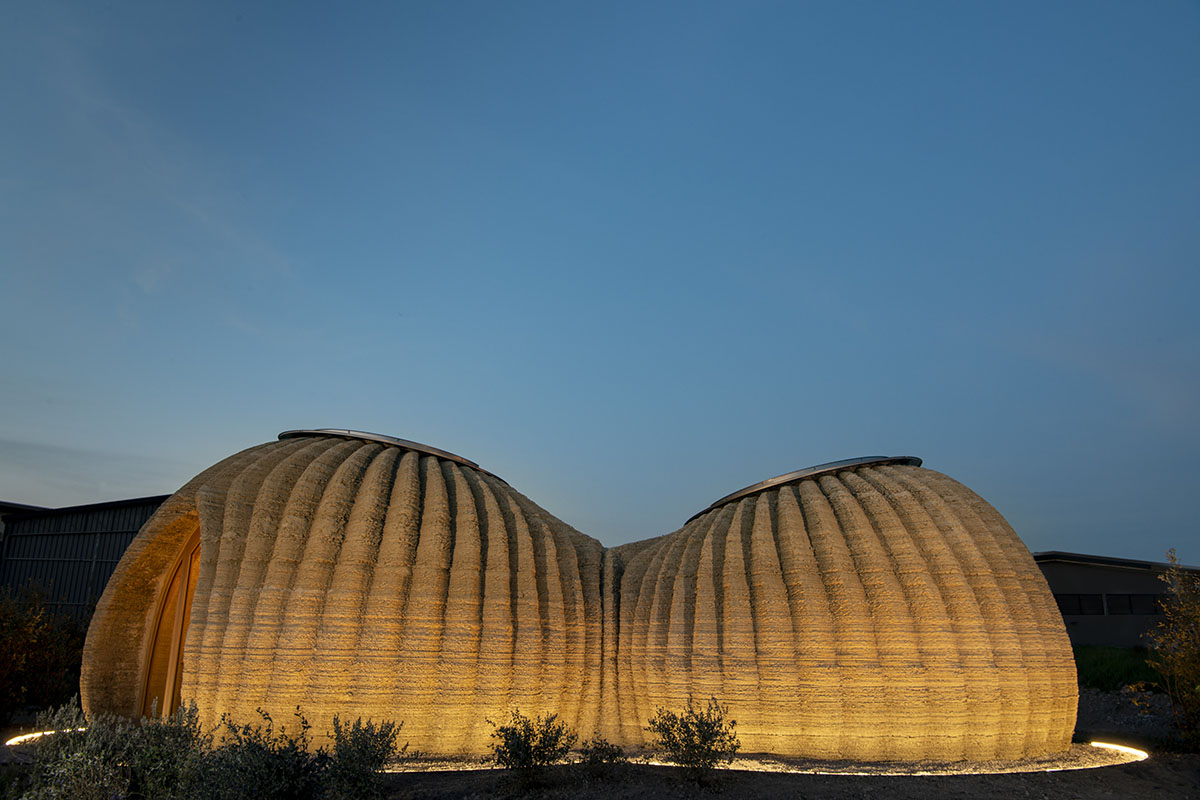
Mario Cucinella Architects and WASP built a 3D printed housing prototype, called TECLA, was printed in Massa Lombarda, Italy. Image © Iago Corazza
According to the architect, "the most difficult thing is to change the culture", and he said: "It takes time and takes knowledge. People need to change their knowledge."
"Architects, professionals, the facing challenger there was not before. I finished my university in 1980; there were no arguments about sustainability of energy," he added.
"There has been long time and many of architects now have this challenge which is a sort of a continuous circle. The idea of a master program is not only for young students but also for all architects."
"They need a continuous education because this challenge is about the knowledge. It's not so easy," Cucinella continued.

Mario Cucinella Architects built the ARPAE headquarters in Ferrara, in northern Italy. Image © Moreno Maggi
"That's why we are working with the companies in the industry because a part of innovation is inside of the industry," according to Cucinella, and he said that "because they need to face by the market, the innovation product and energy to learn how they make a better, better material, better process and design."
"I think that is the aim of the school. Now it's not anymore an academic area, which is very important, but it's not for us," the architect added.
"If someone finished academia, and if they’re looking for profession, and this school exactly helps them to start their journey to 2050," Cucinella concluded.
Mario Cucinella Architects (MCA) was founded in 1992 by Mario Cucinella in Paris. Now based in in Bologna and Milan, MCA produces projects in various scales, typologies and sizes accross the world, by focusing on "a holistic, sustainable, research-driven, and human-centered approach."
Top image: Mario Cucinella. Image © Giovanni De Sandre/Studio GDS, courtesy of UIA World Congress of Architects 2023.
> via UIA World Congress of Architects
Mario Cucinella Architects news SOS sustainability UIA World Congress of Architects
